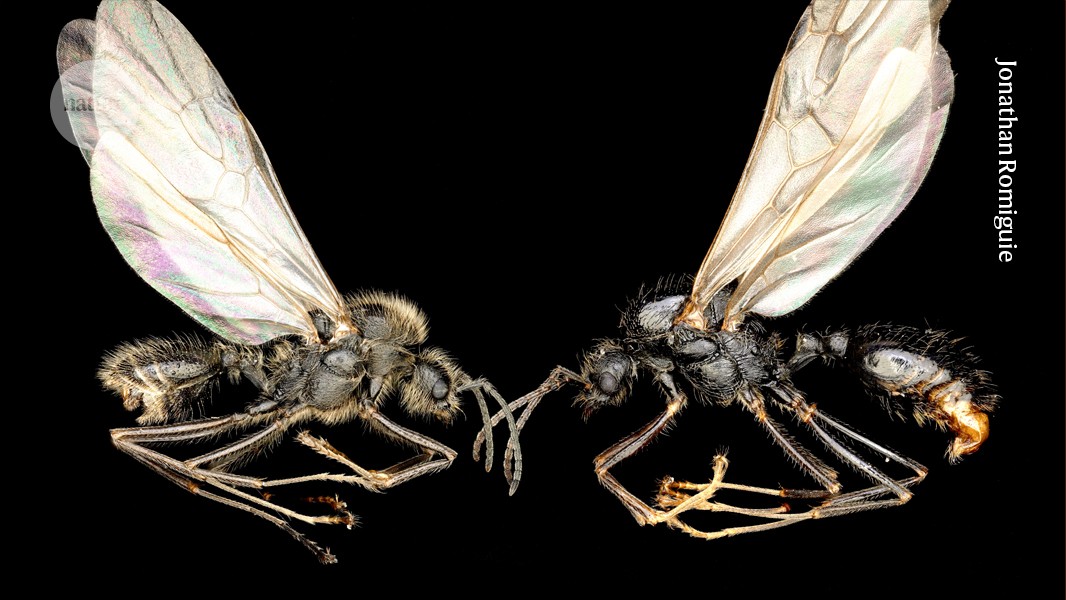‘Almost unimaginable’: these ants are different species but share a mother

Ant queens of one species clone ants of another to create hybrid workers that do their bidding
A common type of ant in Europe breaks a fundamental rule in biology: its queens can produce male offspring that are a whole different species. These queen Iberian harvester ants (Messor ibericus) are sexual parasites that rely on the sperm of males of the ant species Messor structor. They use this sperm to breed an army of robust worker ants, which are hybrids of the two species.
Data now show that, in the absence of nearby M. structor colonies, M. ibericus queens can clone male M. structor ants by laying eggs that contain only M. structor DNA in their nuclei. The findings were published in Nature on 3 September1.
“It’s an absolutely fantastic, bizarre story of a system that allows things to happen that seem almost unimaginable,” says Jacobus Boomsma, an evolutionary biologist at the University of Copenhagen.
DIY cloning
Iberian harvester ants co-exist with M. structor in some parts of Europe, which has historically given M. ibericus queens an abundant supply of M. structor males to mate with.
But evolutionary biologist Jonathan Romiguier at the Institute of Evolutionary Science of Montpellier in France and his colleagues noticed something strange on the Italian island of Sicily: they found Iberian harvester ants everywhere but not a single colony of M. structor.
When the researchers peered inside colonies of the Iberian harvester ant, they found two types of ant that looked very different. Genetic analyses confirmed that the colonies contained both M. ibericus and M. structor, despite the lack of M. structor populations on the island.
Further analyses solved the mystery: Iberian harvester queens clone M. structor ants to maintain a supply of their sperm. They then mate with those M. structor ants to produce hybrid workers that take care of the colony, including by building the nest and foraging for food. In effect, M. ibericus has domesticated M. structor and its genome, Romiguier says.
Enjoying our latest content?
Login or create an account to continue
- Access the most recent journalism from Nature's award-winning team
- Explore the latest features & opinion covering groundbreaking research
or
Sign in or create an account Continue with Google
Continue with Google
doi: https://doi.org/10.1038/d41586-025-02807-0
Read the related News & Views: ‘Ant queens produce sons of two distinct species’.
This story originally appeared on: Nature - Author:Max Kozlov

















